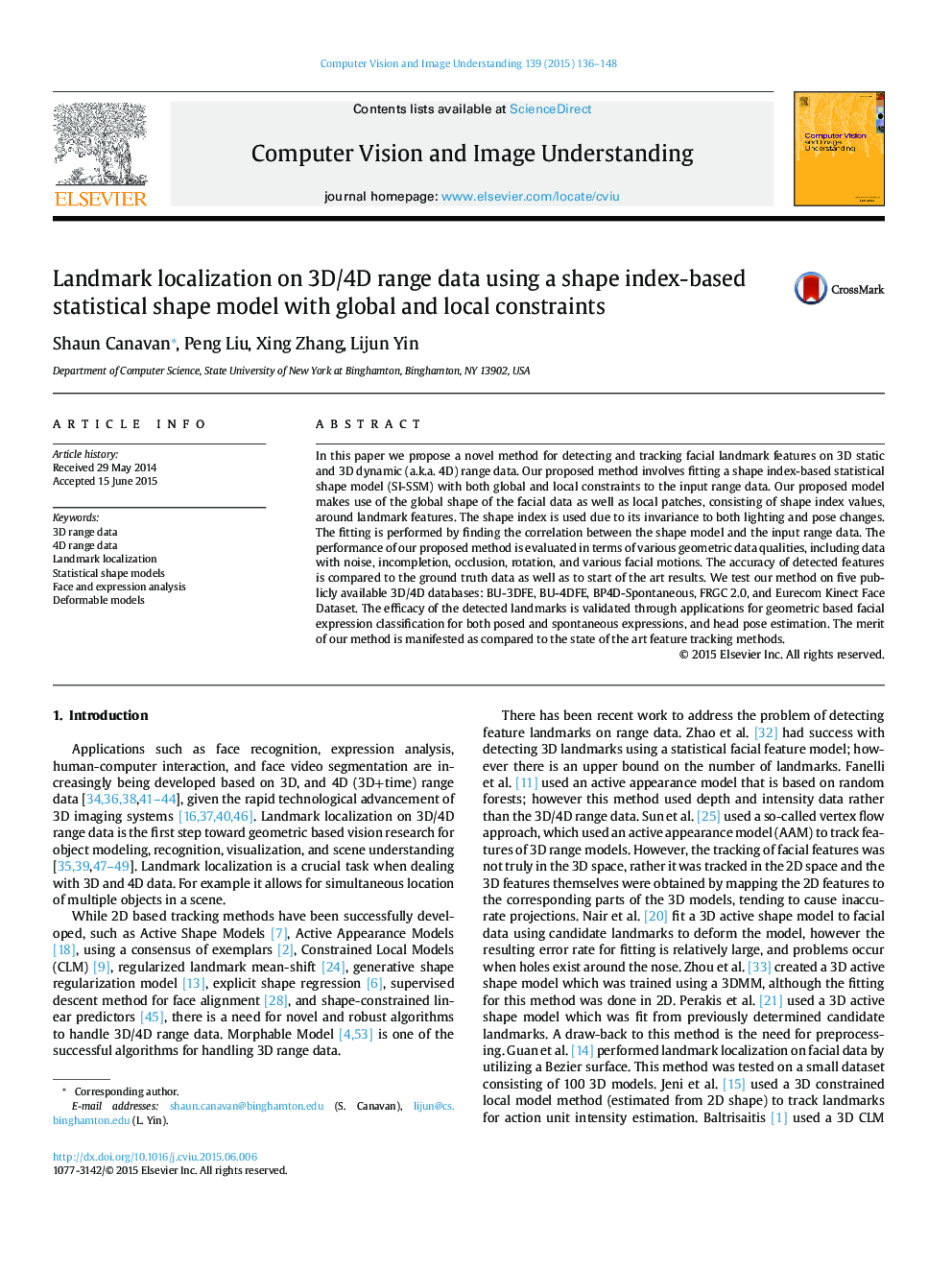| Article ID | Journal | Published Year | Pages | File Type |
|---|---|---|---|---|
| 527412 | Computer Vision and Image Understanding | 2015 | 13 Pages |
•We propose a method for landmark localization on 3D and 4D range data.•A new Shape Index-Based Statistical Shape Model is proposed.•Five Benchmark 3D/4D face databases are tested on.•The accuracy of the landmarks is compared to ground truth data, and state-of-the-art methods.•The efficacy of the landmarks is validated through expression analysis and pose estimation.
In this paper we propose a novel method for detecting and tracking facial landmark features on 3D static and 3D dynamic (a.k.a. 4D) range data. Our proposed method involves fitting a shape index-based statistical shape model (SI-SSM) with both global and local constraints to the input range data. Our proposed model makes use of the global shape of the facial data as well as local patches, consisting of shape index values, around landmark features. The shape index is used due to its invariance to both lighting and pose changes. The fitting is performed by finding the correlation between the shape model and the input range data. The performance of our proposed method is evaluated in terms of various geometric data qualities, including data with noise, incompletion, occlusion, rotation, and various facial motions. The accuracy of detected features is compared to the ground truth data as well as to start of the art results. We test our method on five publicly available 3D/4D databases: BU-3DFE, BU-4DFE, BP4D-Spontaneous, FRGC 2.0, and Eurecom Kinect Face Dataset. The efficacy of the detected landmarks is validated through applications for geometric based facial expression classification for both posed and spontaneous expressions, and head pose estimation. The merit of our method is manifested as compared to the state of the art feature tracking methods.
